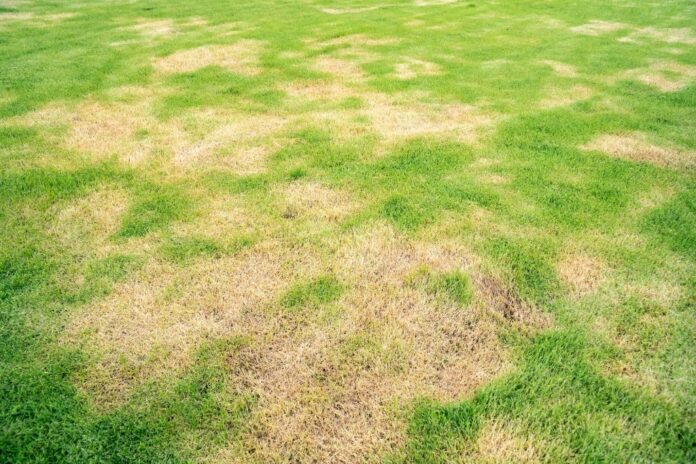Is your lawn looking worse for wear after the harsh winter? Don’t worry, you’re not alone! Many homeowners face the challenge of restoring their damaged lawns in spring. But fear not, because with the right approach and a little TLC, you can revive your lawn and have it looking lush and green in no time. In this comprehensive guide, we’ll walk you through the steps to fix your damaged lawn in spring, ensuring you have a beautiful outdoor space to enjoy throughout the season.
Spring is a time of rejuvenation and growth, and your lawn is no exception. After enduring the cold winter months, your lawn may have suffered from a variety of issues such as bare patches, weeds, or disease. However, with proper care and attention, you can transform your damaged lawn into a thriving oasis that will make your neighbors green with envy. So, let’s dive into the steps you can take to bring your lawn back to life this spring.
Assess the Damage
The first step in fixing your damaged lawn is to assess the extent of the damage. Take a walk around your yard and look for any problem areas. Are there bare patches where the grass has died? Are there weeds taking over? Is the soil compacted? Identifying the specific issues will help you develop a targeted plan to address each problem effectively.
Aeration: Breathing New Life into Your Lawn
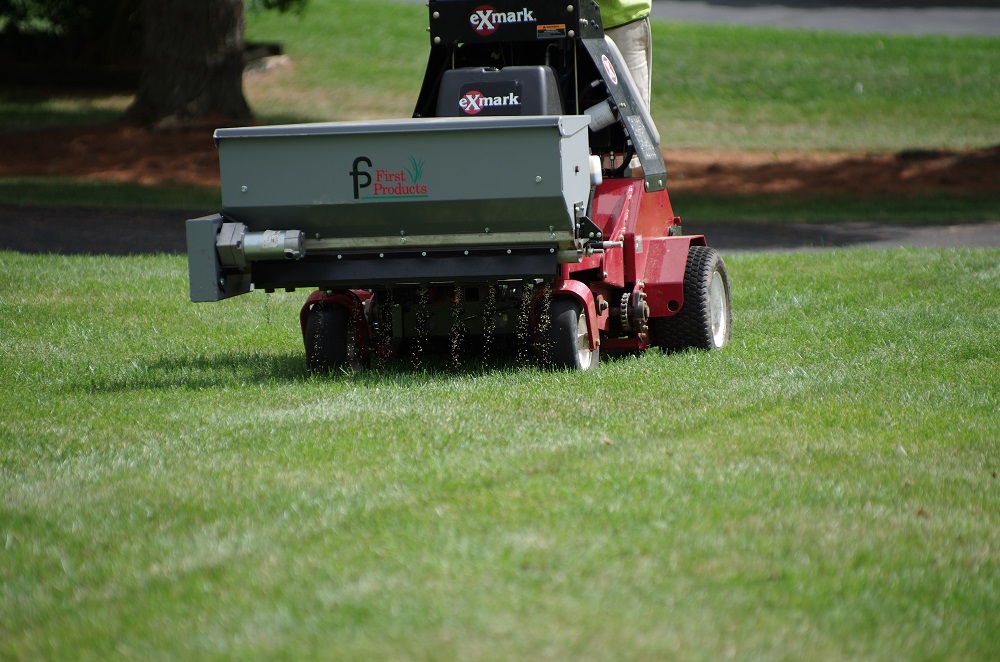
One common issue in damaged lawns is soil compaction, which restricts the flow of air, water, and nutrients to the grass roots. To alleviate compaction and promote healthy growth, aeration is key. Aeration involves perforating the soil with small holes to allow for better air circulation and water absorption. You can rent an aerator from your local garden center or hire a professional to do the job for you. Aerate your lawn in the spring when the soil is moist but not overly wet for optimal results.
Seeding: Filling in the Blanks
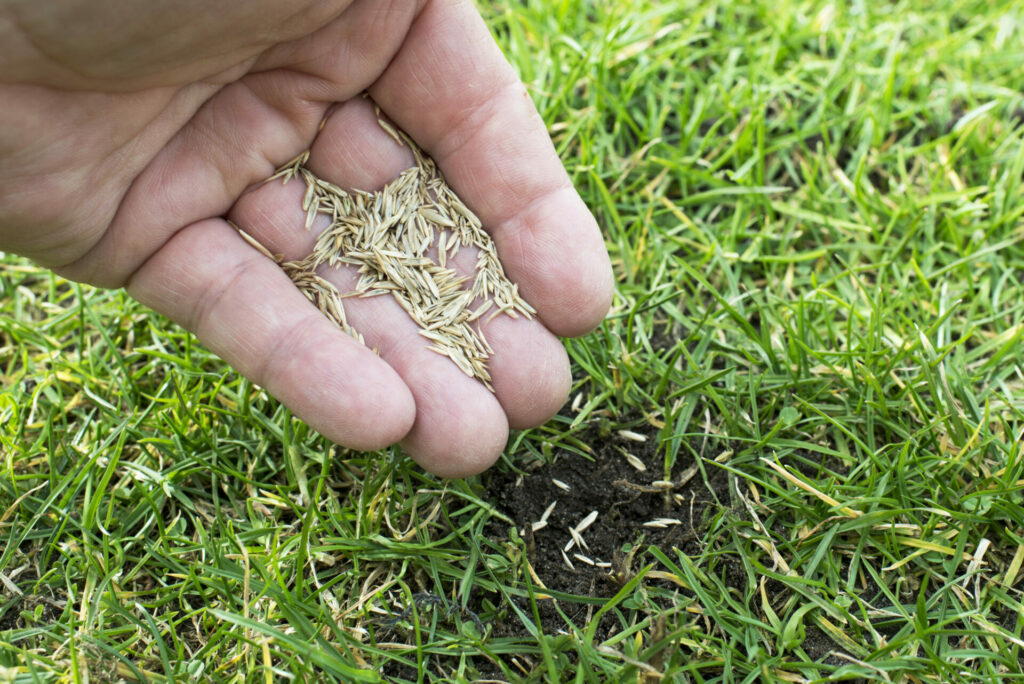
Bare patches are a common sight in damaged lawns, but fear not! Seeding is an effective way to fill in those bare spots and promote thick, lush grass growth. Here’s how you can go about it:
- Begin by loosening the soil in the bare areas with a rake or garden fork. This will create a better environment for the seeds to germinate.
- Select a high-quality grass seed that is suitable for your region and the conditions of your lawn.
- Spread the seed evenly over the bare patches, ensuring good seed-to-soil contact.
- Lightly rake the seeded areas to cover the seeds with a thin layer of soil.
- Water the seeded areas regularly to keep the soil moist until the new grass has established itself.
Weed Control: Out with the Bad, In with the Good
Weeds can quickly take over a damaged lawn, choking out the healthy grass and spoiling the overall appearance. To combat weeds effectively, a two-pronged approach is recommended: prevention and control.
Prevention: Creating an Unwelcome Environment for Weeds
Preventing weeds from infiltrating your lawn is crucial to maintaining its health and appearance. Here are some preventative measures you can take:
- Mow your lawn at the appropriate height for your grass type. Taller grass shades the soil, preventing weed seeds from germinating.
- Fertilize your lawn regularly to encourage healthy grass growth, which will outcompete weeds.
- Mulch your garden beds to prevent weed growth around the edges of your lawn.
Control: Tackling Existing Weeds
If weeds have already invaded your lawn, it’s time to take action. There are several methods you can employ to control weeds effectively:
- Hand pulling: For a small number of weeds, hand pulling can be an effective option. Ensure you remove the entire root system to prevent regrowth.
- Herbicides: Selective herbicides can target specific weed types without harming your grass. Follow the instructions carefully and apply the herbicide when the weather conditions are suitable.
- Manual removal tools: Tools like weed pullers or weed knives can make the task of weed removal more efficient, especially for larger areas.
Remember, weed control is an ongoing process, so regular maintenance and vigilance are key to keeping your lawn weed-free.
Watering: Quenching Your Lawn’s Thirst
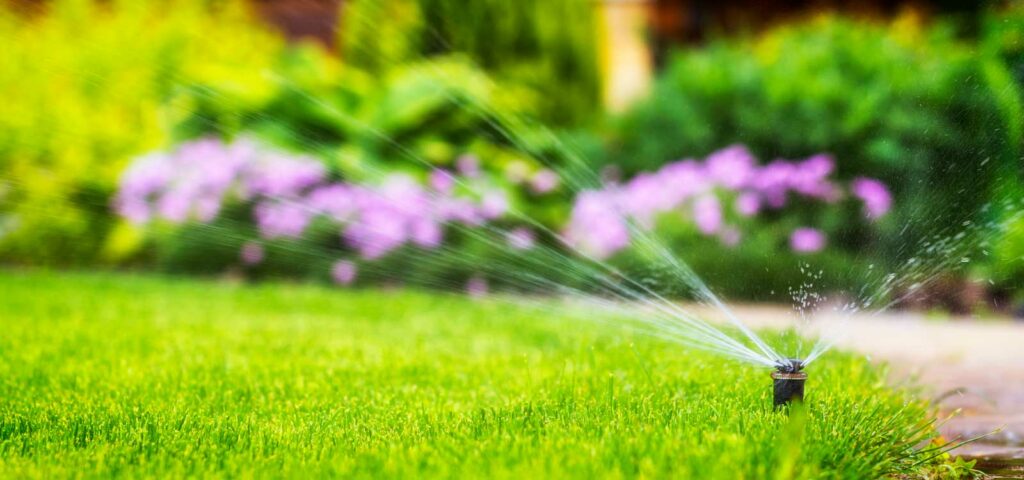
Proper watering is essential for the health and recovery of your damaged lawn. Here are some watering tips to keep in mind:
- Water deeply and infrequently: Aim for a deep watering that reaches the root zone of the grass. This encourages the roots to grow deeper and makes your lawn more resilient to drought.
- Water in the morning: Watering early in the day allows the grass blades to dry before evening, reducing the risk of disease.
- Use a sprinkler system or irrigation: Investing in a sprinkler system or irrigation can help ensure your lawn receives consistent and adequate water supply.
Remember, overwatering can be just as detrimental to your lawn as underwatering. Monitor the moisture level of your soil and adjust your watering schedule accordingly.
Fertilization: Feeding Your Lawn for Success
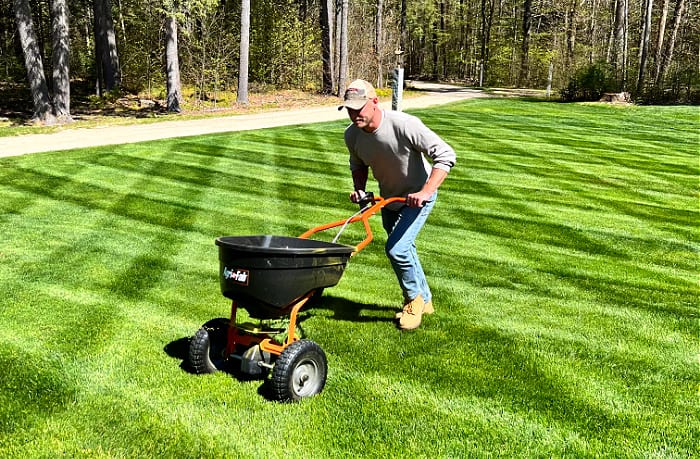
Proper fertilization provides your lawn with the essential nutrients it needs to thrive. Consider the following when fertilizing your damaged lawn:
- Conduct a soil test: A soil test will help you identify any nutrient deficiencies or imbalances in your soil. Based on the results, you can select the appropriate fertilizer.
- Choose the right fertilizer: Look for a fertilizer with a balanced ratio of nitrogen (N), phosphorus (P), and potassium (K). The ratio will vary depending on your grass type and the time of year.
- Apply fertilizer at the right time: For most lawns, early spring is the ideal time to apply a slow-release fertilizer. This will provide sustained nourishment as your lawn enters its active growth phase.
Remember to follow the manufacturer’s instructions when applying fertilizer, and avoid overapplication, as it can harm your lawn and the environment.
Mowing: Taming the Wild Grass
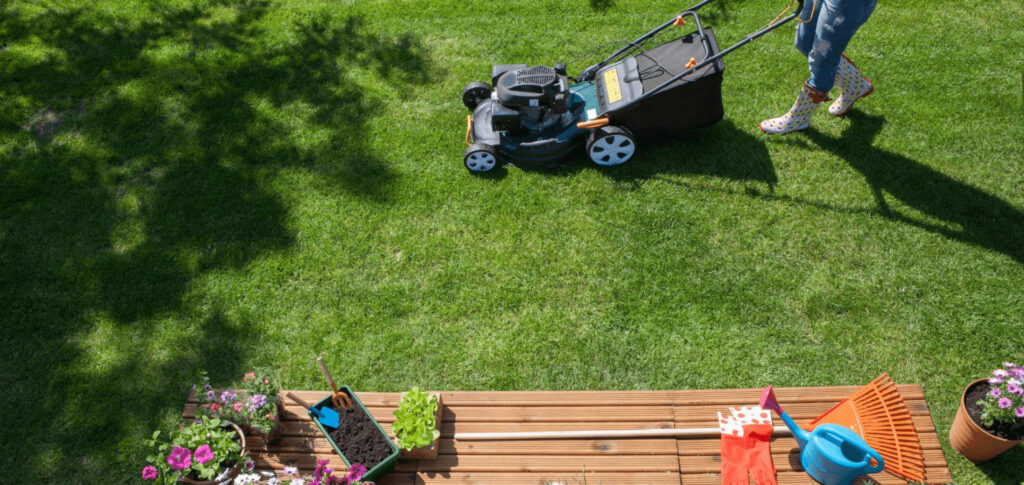
Proper mowing practices can make a significant difference in the health and appearance of your lawn. Here are some guidelines to keep in mind:
- Set the mower at the appropriate height: Different grass types have different height requirements for optimal health. Adjust your mower’s cutting height accordingly.
- Don’t scalp your lawn: Avoid cutting your grass too short, as it weakens the plants and encourages weed growth.
- Sharpen your mower blades: Dull blades tear the grass instead of cleanly cutting it, leading to a ragged appearance and increased susceptibility to disease.
Regular mowing, along with the correct height and sharp blades, will promote healthy growth and help your damaged lawn recover.
Dealing with Common Lawn Problems
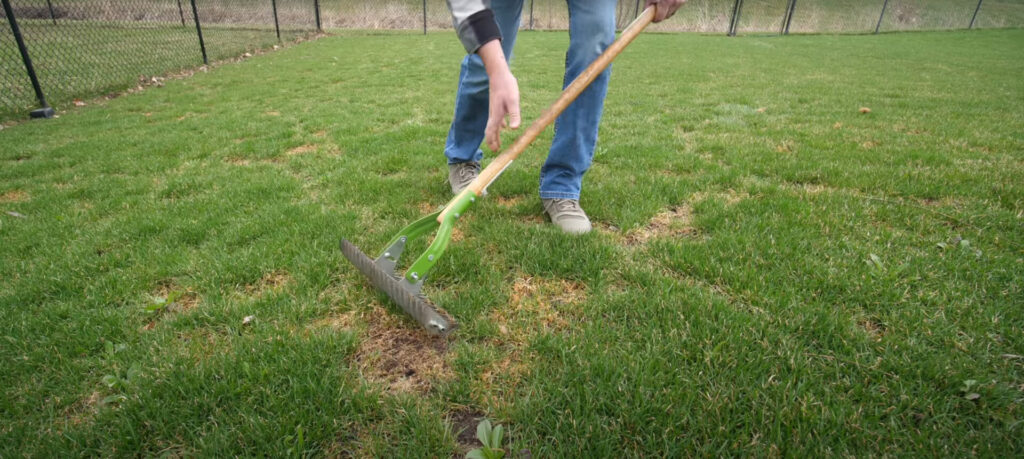
Even with the best care, you may encounter specific lawn problems that require additional attention. Here are a few common issues and their solutions:
- Grubs and pests: If you notice patches of dead grass that easily lift away, you may have a grub infestation. Apply a targeted grub control treatment to eliminate the pests and restore your lawn.
- Fungal diseases: Brown patches, white spots, or unusual growth may indicate fungal diseases. Applying a fungicide designed for your specific lawn disease can help control the problem.
- Thatch buildup: Excessive thatch can prevent water and nutrients from reaching the roots. Regular dethatching or aerating can help alleviate this issue.
Identifying the specific problem and taking appropriate action will help you overcome these challenges and ensure the health of your lawn.
FAQs (Frequently Asked Questions)
A: The time it takes to restore your damaged lawn will vary depending on the extent of the damage, the steps you take, and the conditions of your region. With proper care, you should start seeing improvements within a few weeks.
A: Yes, you can restore your damaged lawn using organic and natural methods. Aeration, overseeding, proper watering, and mowing practices can go a long way in revitalizing your lawn without the use of chemicals.
A: It’s generally recommended to remove the dead grass and loosen the soil before overseeding. This allows the new grass seeds to make direct contact with the soil, increasing their chances of germination and establishment.
A: Newly seeded lawns require consistent moisture to support germination and establishment. Water lightly and frequently to keep the soil consistently moist until the new grass reaches a height of about 2 inches.
A: Yes, compost can be an excellent natural fertilizer for your lawn. It improves soil structure, provides nutrients, and enhances moisture retention. Apply a thin layer of compost and rake it into the grass to ensure even distribution.
A: Fixing a damaged lawn is a task that homeowners can tackle on their own with the right knowledge and tools. However, if you’re unsure or prefer professional assistance, hiring a lawn care professional can ensure optimal results.
Conclusion
Repairing a damaged lawn in spring may seem like a daunting task, but with the right approach and a little elbow grease, you can turn your lawn into a vibrant and healthy outdoor space. Assess the damage, address specific issues like compaction, bare patches, and weeds, and implement proper watering, fertilization, and mowing practices. Be patient and consistent in your efforts, and soon you’ll be rewarded with a lush and beautiful lawn to enjoy throughout the season. So, roll up your sleeves, grab your gardening tools, and let’s get started on fixing your damaged lawn in spring!


